Abstract
Three experiments demonstrated the development and generalized use of a singular and plural declarative sentence in a child initially lacking sentence form responses. In each experiment, an adult(s) served as a language model(s), and consequences (sweets) were provided for imitation of the model. During training trials, an item(s) was displayed first to the model(s) then to the subject; these displays were accompanied by requests to label the item(s). Generalization was assessed by a number of probe trials that were periodically interspersed among training trials. During these trials, the subject was requested to label the displayed item(s) without any preceding labelling response from the model. Using these procedures, generalized use of a singular sentence (“That is one—”) resulted in Experiment I, and generalized use of a plural sentence (“These are two—”) resulted in Experiment II. In Experiment III, two models (a singular and a plural sentence model) were made available to the subject but imitation of only one model was reinforced during any one condition. Results indicated the subject labelled probe (generalization) items with the same sentence form that was modelled and reinforced during training trials.
Full text
PDF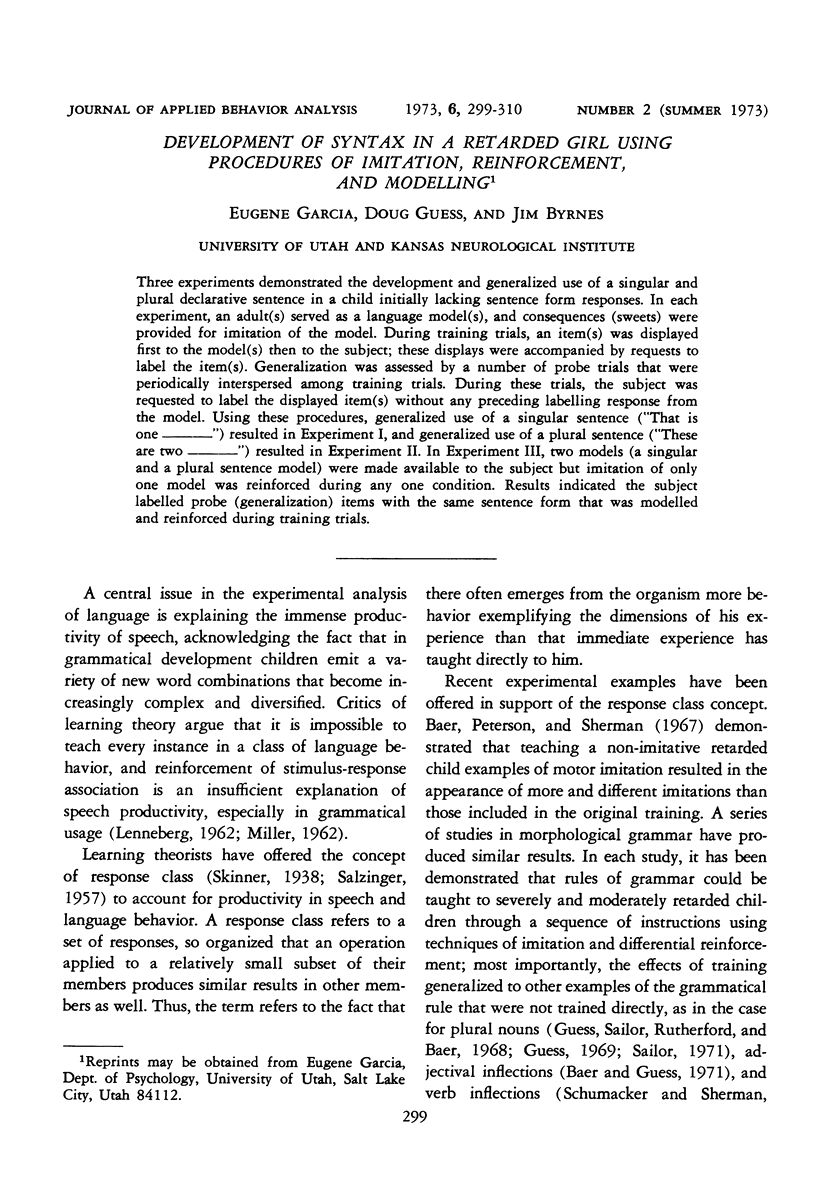
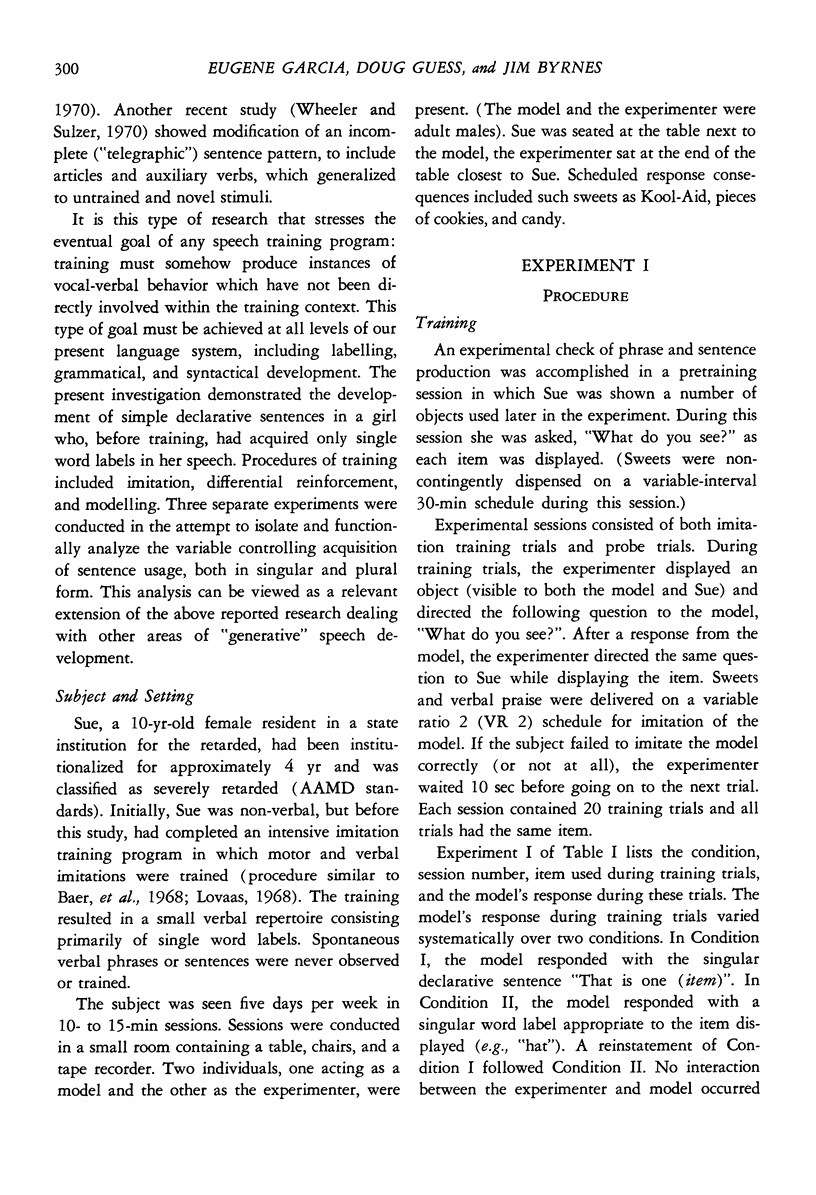
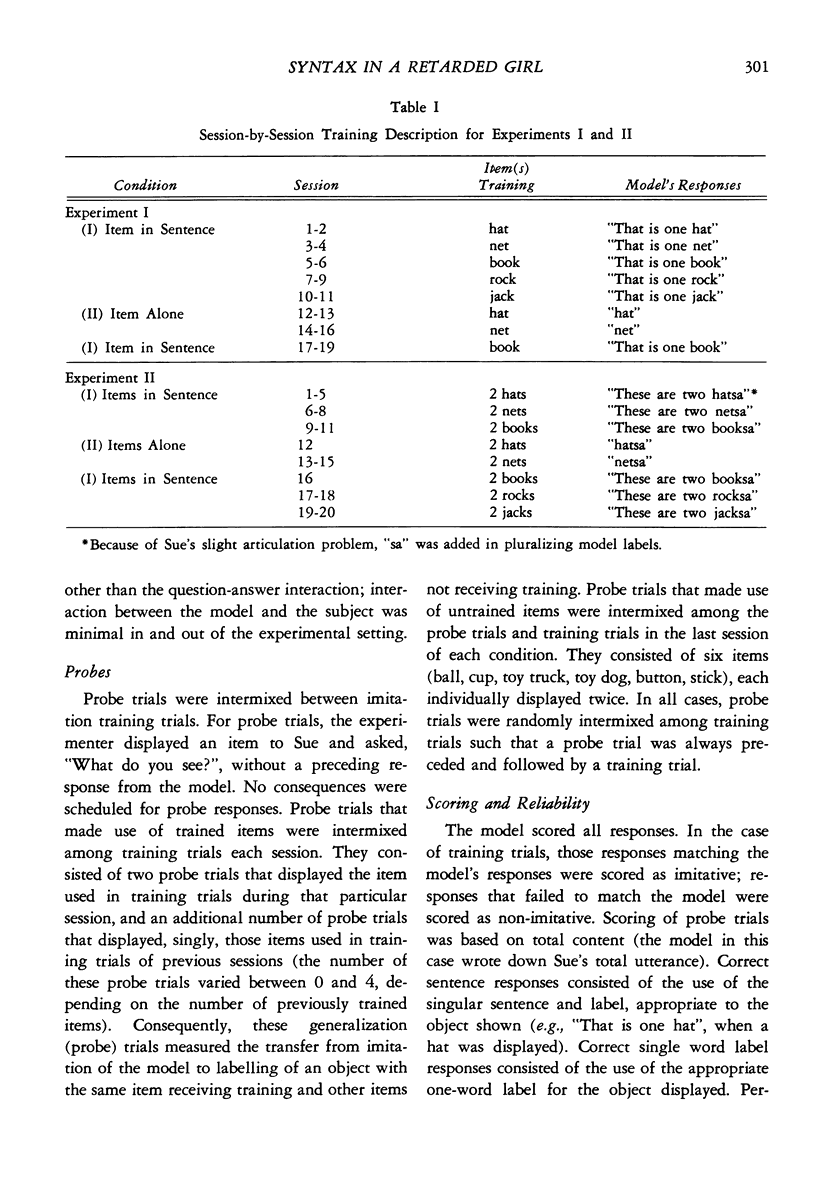
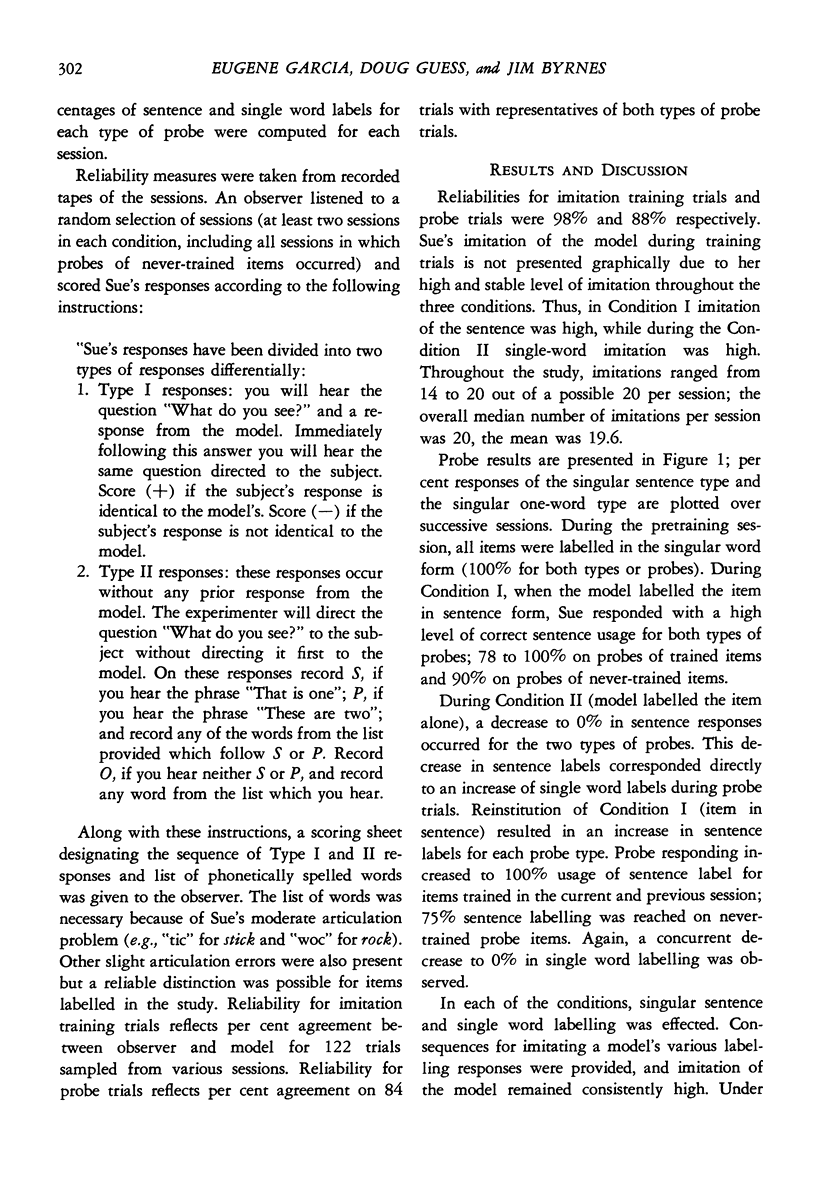
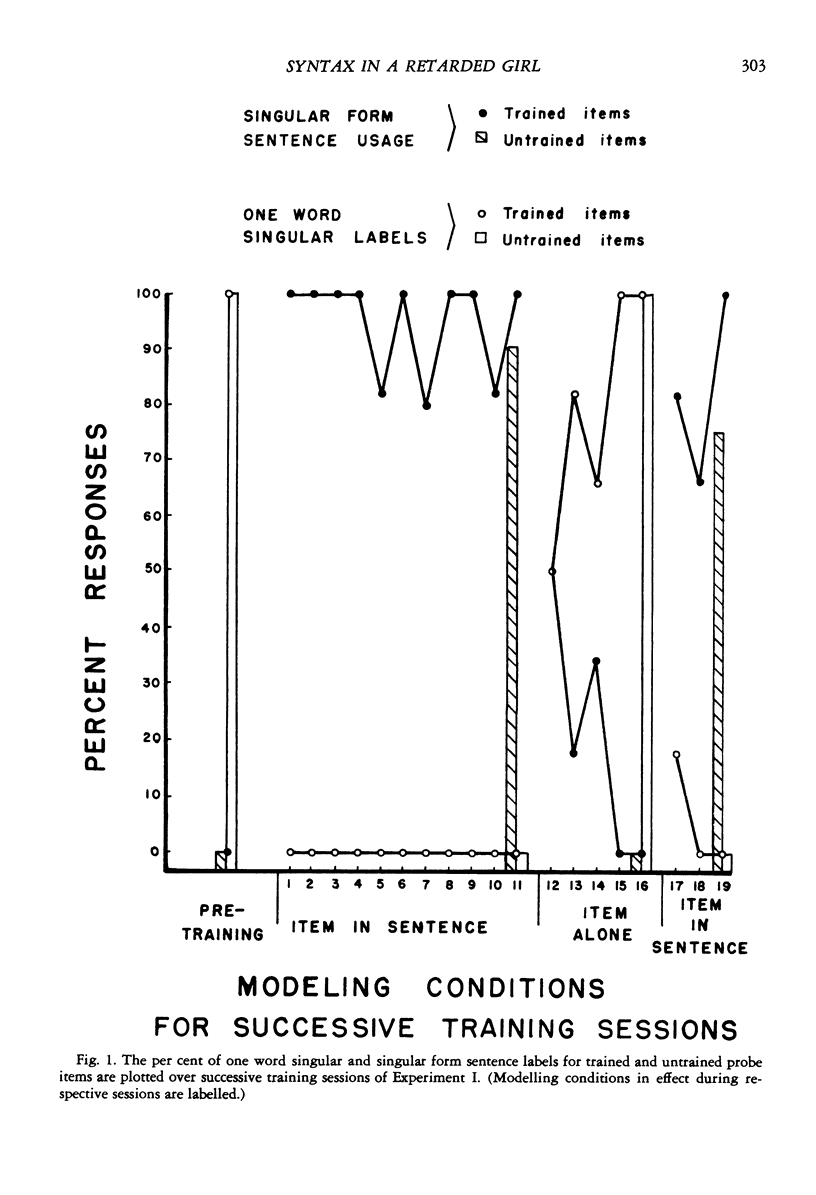
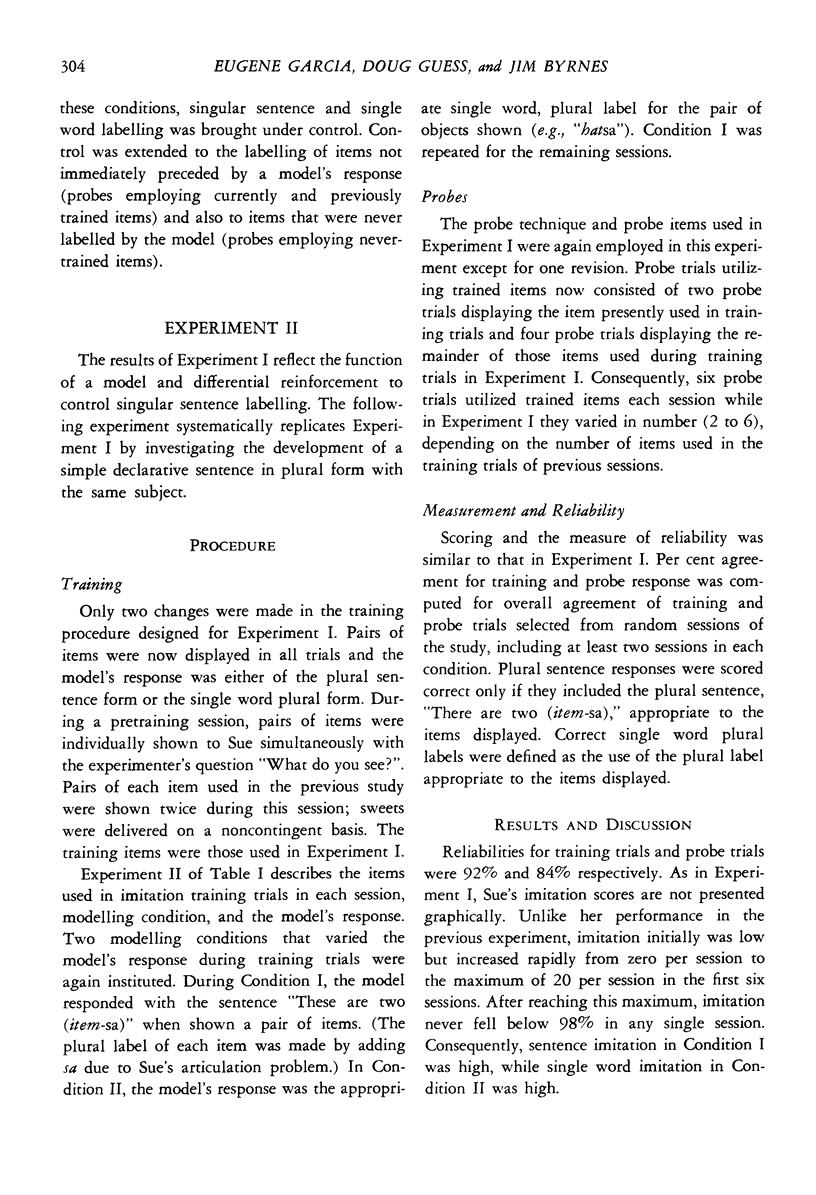
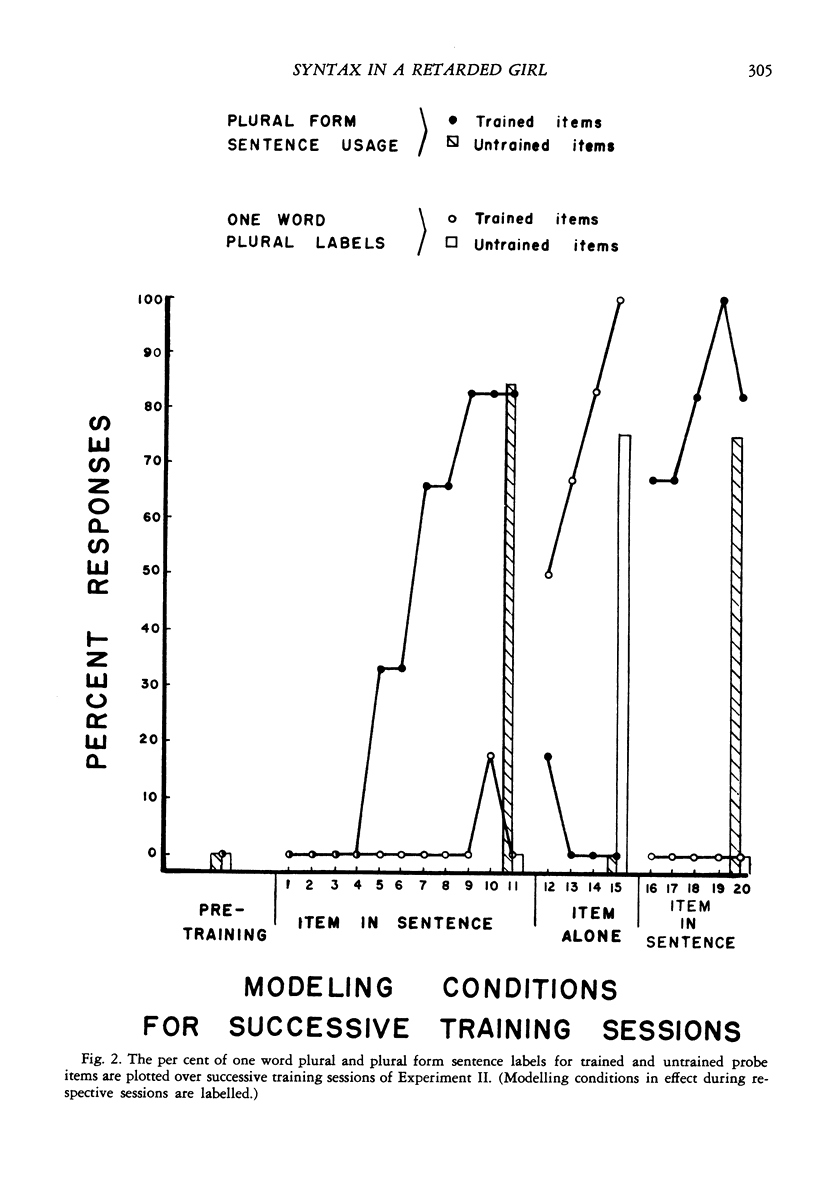
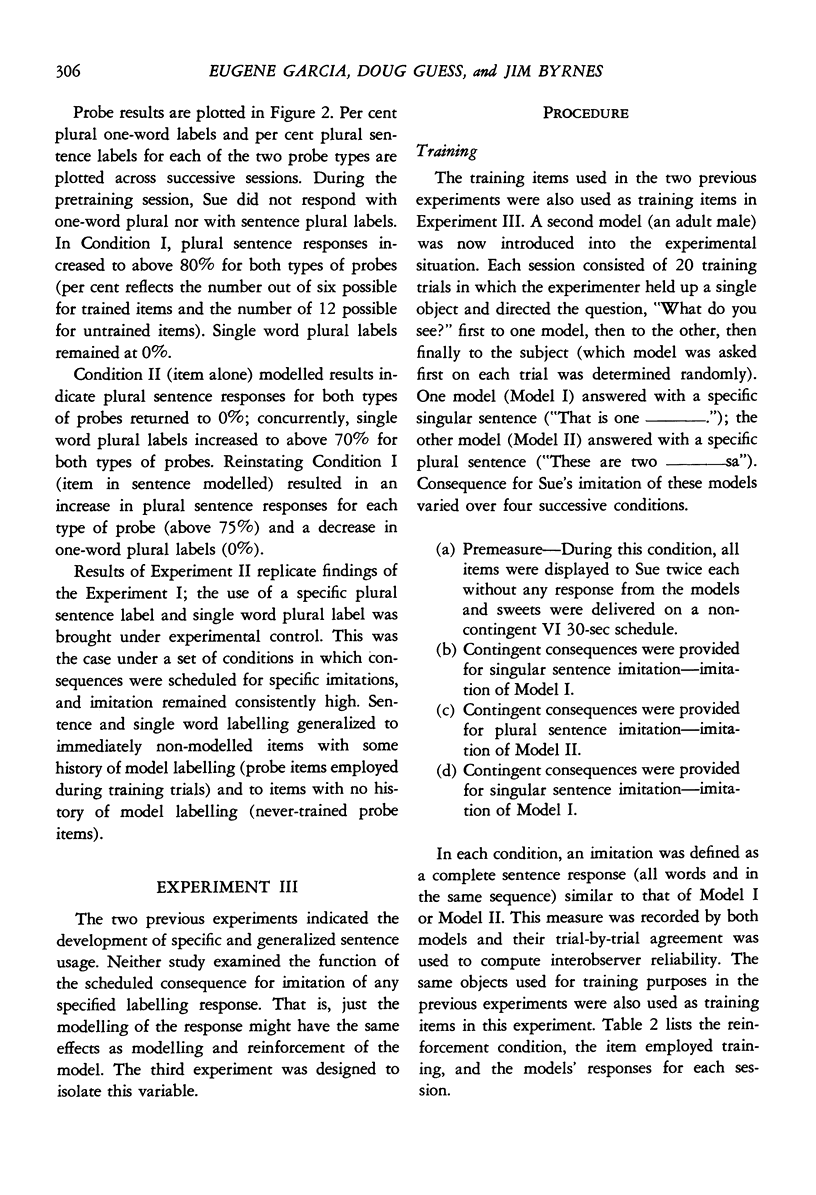
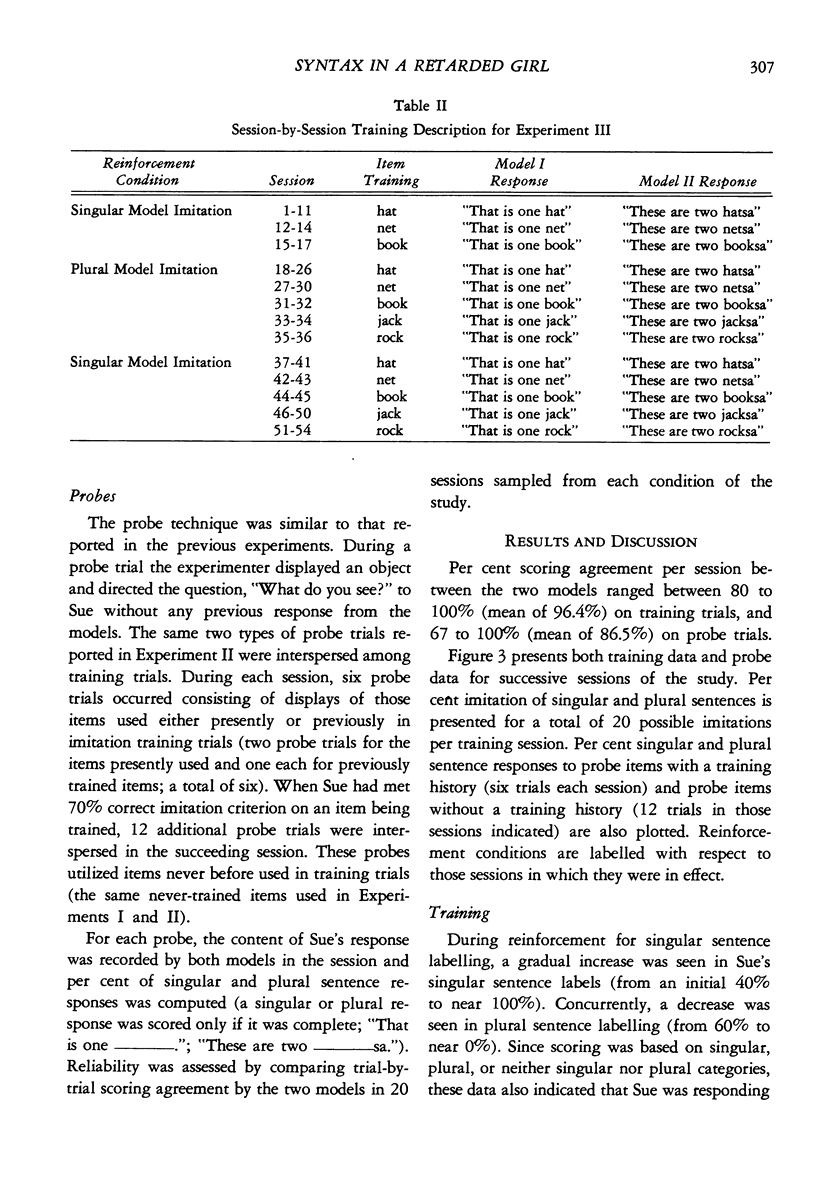
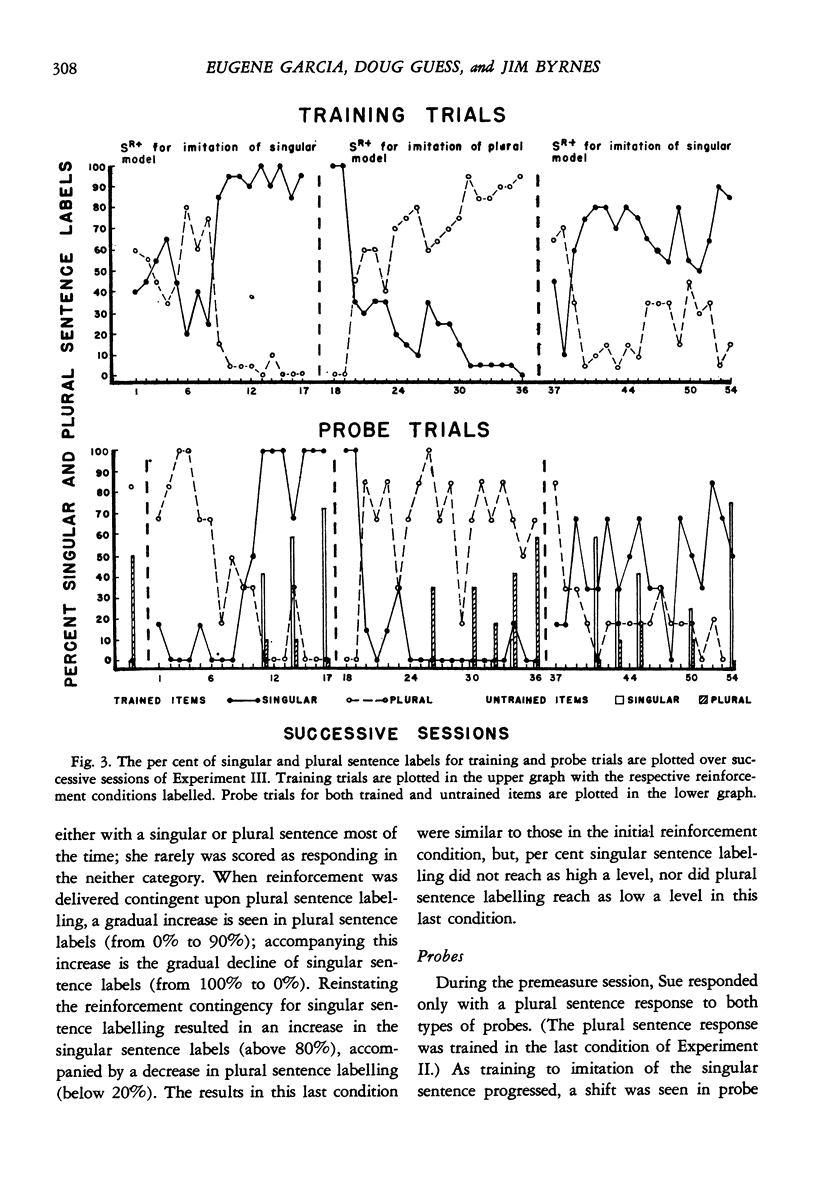
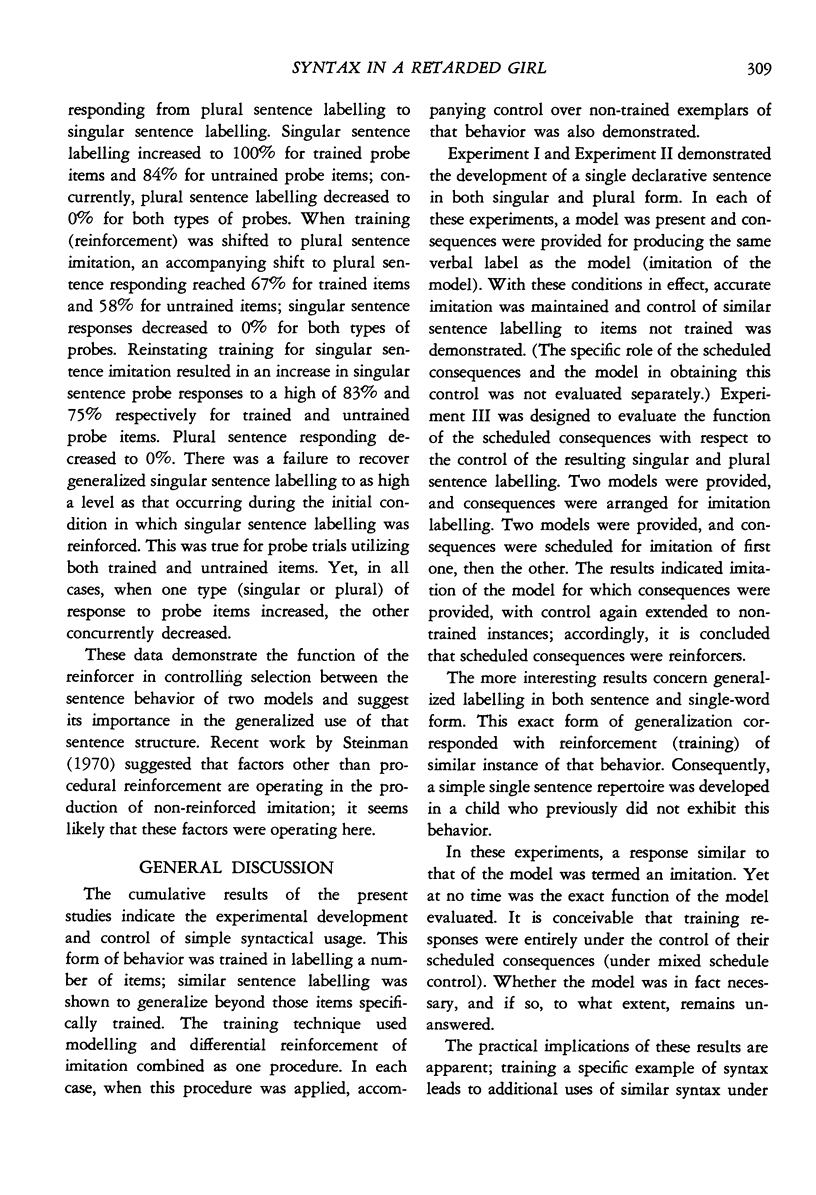

Selected References
These references are in PubMed. This may not be the complete list of references from this article.
- Baer D. M., Guess D. Receptive training of adjectival inflections in mental retardates. J Appl Behav Anal. 1971 Summer;4(2):129–139. doi: 10.1901/jaba.1971.4-129. [DOI] [PMC free article] [PubMed] [Google Scholar]
- Baer D. M., Peterson R. F., Sherman J. A. The development of imitation by reinforcing behavioral similarity to a model. J Exp Anal Behav. 1967 Sep;10(5):405–416. doi: 10.1901/jeab.1967.10-405. [DOI] [PMC free article] [PubMed] [Google Scholar]
- Guess D. A functional analysis of receptive language and productive speech: acquisition of the plural morpheme. J Appl Behav Anal. 1969 Spring;2(1):55–64. doi: 10.1901/jaba.1969.2-55. [DOI] [PMC free article] [PubMed] [Google Scholar]
- LENNEBERG E. H. Understanding language without ability to speak: a case report. J Abnorm Soc Psychol. 1962 Dec;65:419–425. doi: 10.1037/h0041906. [DOI] [PubMed] [Google Scholar]
- Peterson R. F. Some experiments on the organization of a class of imitative behaviors. J Appl Behav Anal. 1968 Fall;1(3):225–235. doi: 10.1901/jaba.1968.1-225. [DOI] [PMC free article] [PubMed] [Google Scholar]
- Sailor W. Reinforcement and generalization of productive plural allomorphs in two retarded children. J Appl Behav Anal. 1971 Winter;4(4):305–310. doi: 10.1901/jaba.1971.4-305. [DOI] [PMC free article] [PubMed] [Google Scholar]
- Schumaker J., Sherman J. A. Training generative verb usage by imitation and reinforcement procedures. J Appl Behav Anal. 1970 Winter;3(4):273–287. doi: 10.1901/jaba.1970.3-273. [DOI] [PMC free article] [PubMed] [Google Scholar]
- Steinman W. M. The social control of generalized imitation. J Appl Behav Anal. 1970 Fall;3(3):159–167. doi: 10.1901/jaba.1970.3-159. [DOI] [PMC free article] [PubMed] [Google Scholar]
- Wheeler A. J., Sulzer B. Operant training and generalization of a verbal response form in a speech-deficient child. J Appl Behav Anal. 1970 Summer;3(2):139–147. doi: 10.1901/jaba.1970.3-139. [DOI] [PMC free article] [PubMed] [Google Scholar]


